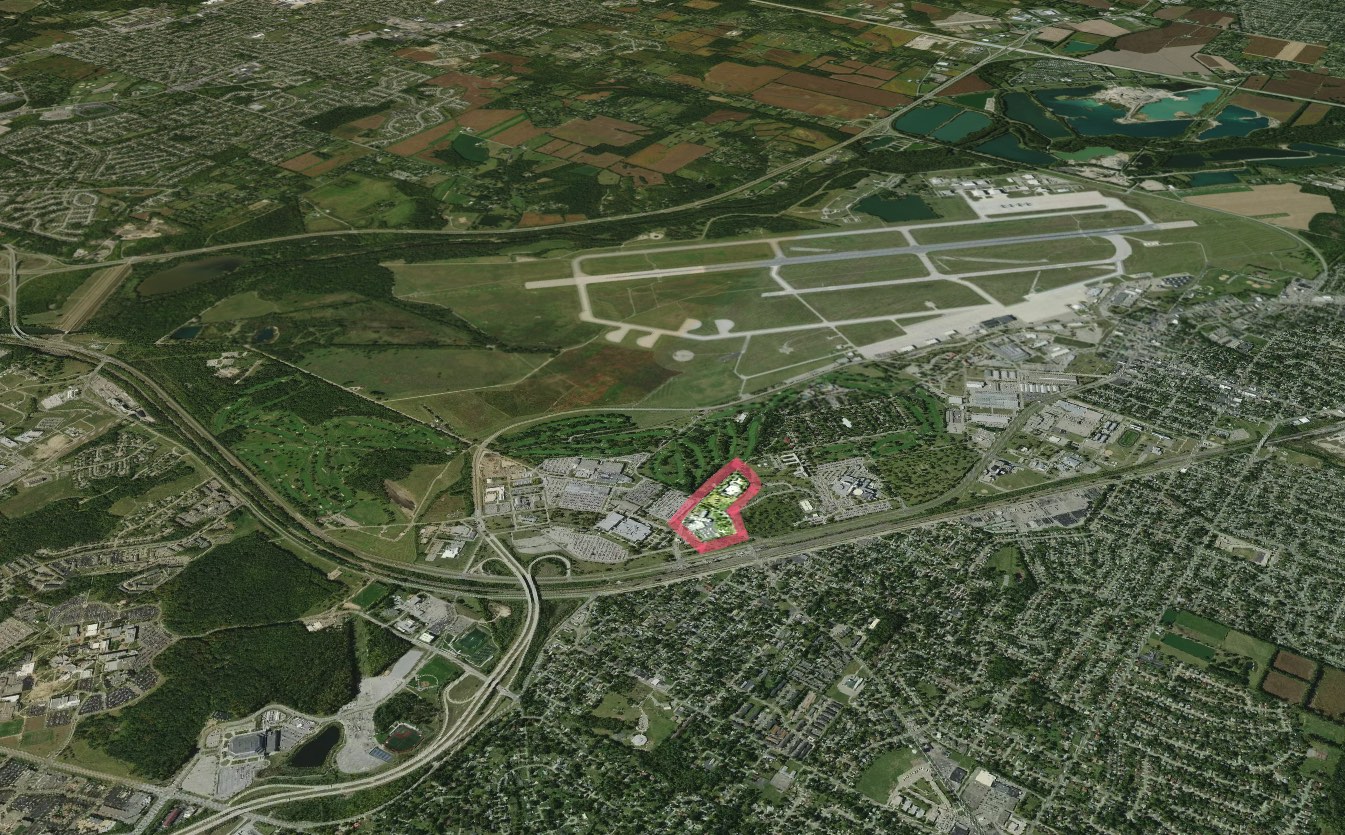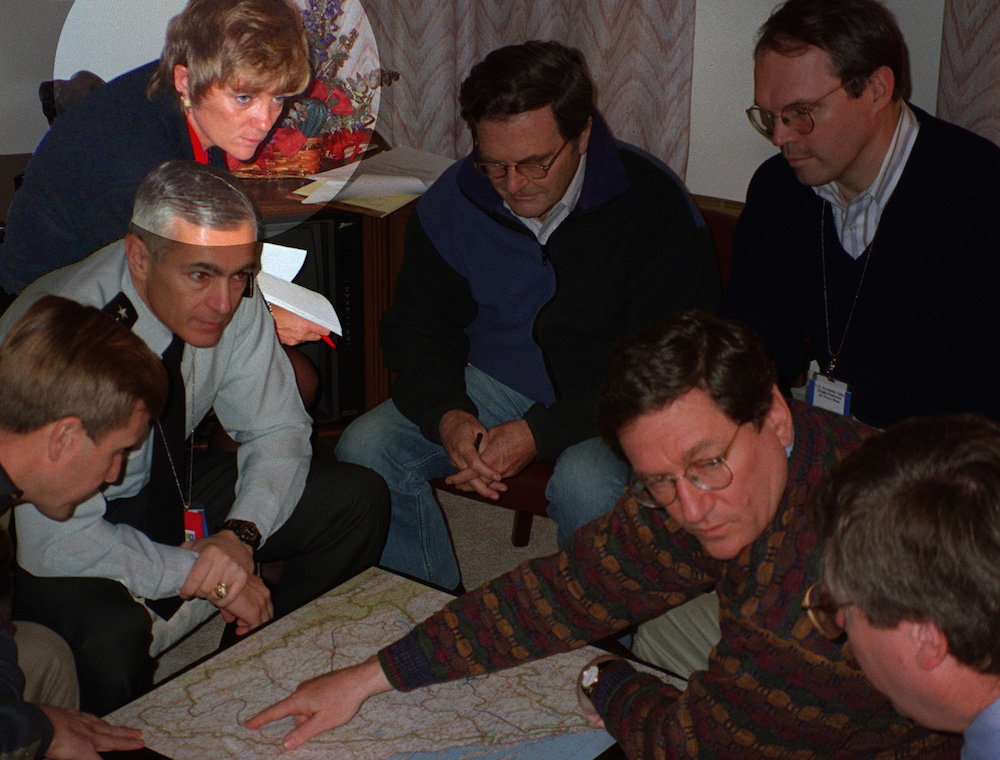Why choose Dayton? Well, it was Rosemarie Pauli’s idea.

 One of the most capable diplomats in the US Foreign Service during the 1990s was Richard Holbrooke. He quickly became a top advisor to President Bill Clinton for diplomatic relations.
One of the most capable diplomats in the US Foreign Service during the 1990s was Richard Holbrooke. He quickly became a top advisor to President Bill Clinton for diplomatic relations.
 His Chief of Staff was a woman name Rosemarie Pauli. She recalled:
His Chief of Staff was a woman name Rosemarie Pauli. She recalled:
“I’m the chief of staff. I do whatever needs to be done.”
When Holbrooke was looking for a good location for the Peace talks, he asked Pauli to assist. Rosemarie saw reports that Wright-Patterson Air Force Base had several great attributes about it:

An aerial view of Wright Patterson AFB outside of Dayton (Source: Google Earth)
Wright-Patt was a military base, so it would keep the warring delegations stuck on base to focus on the negotiations. (Remember, in 1995 they had no smartphones! Or even the internet.)
The base also had five nearly-identical Visiting Officers Quarters. This meant each delegation had exactly equal accommodations... No one could complain about favoritism.
Wright-Patt had gym facilities on site — so less need to leave the talks — but also nearby restaurants so negotiators could also take a break.
It didn't hurt that the base had the world's most powerful fighter planes parked everywhere! This would remind the delegations that the United States meant serious business.
Holbrooke relied on Pauli not only to attend to details. He asked her to befriend the Foreign Ministers and the Balkan presidents, to build more trust. Rosemarie thought to ask these leaders to tell her about their own children. This would remind them what was at stake in stopping the war.

photo contributed by Tom Rice
